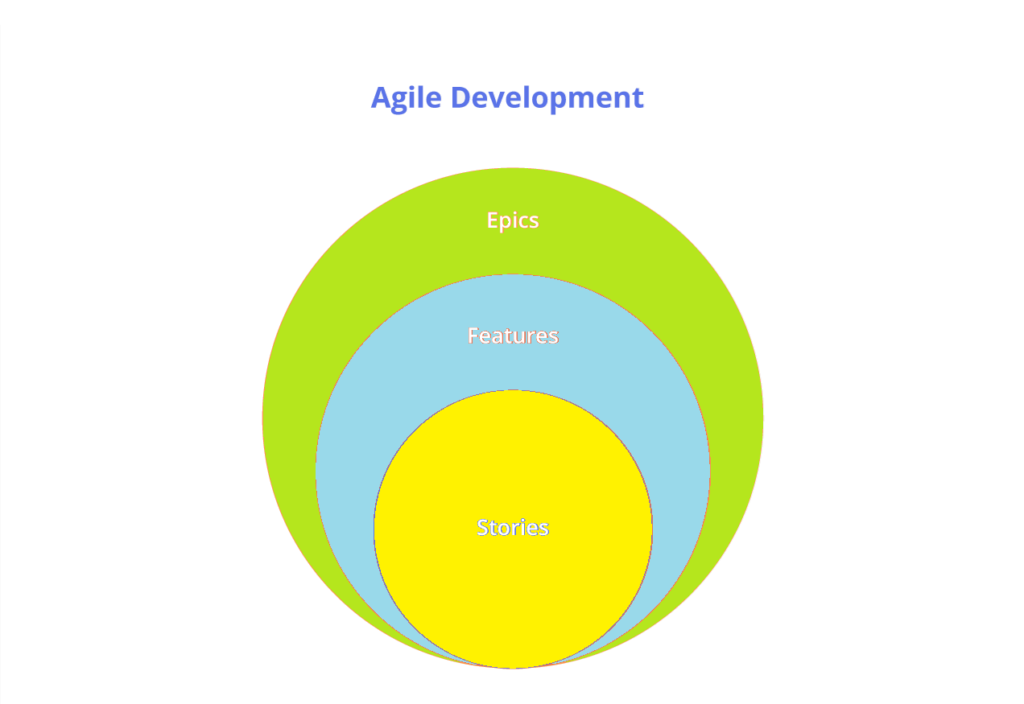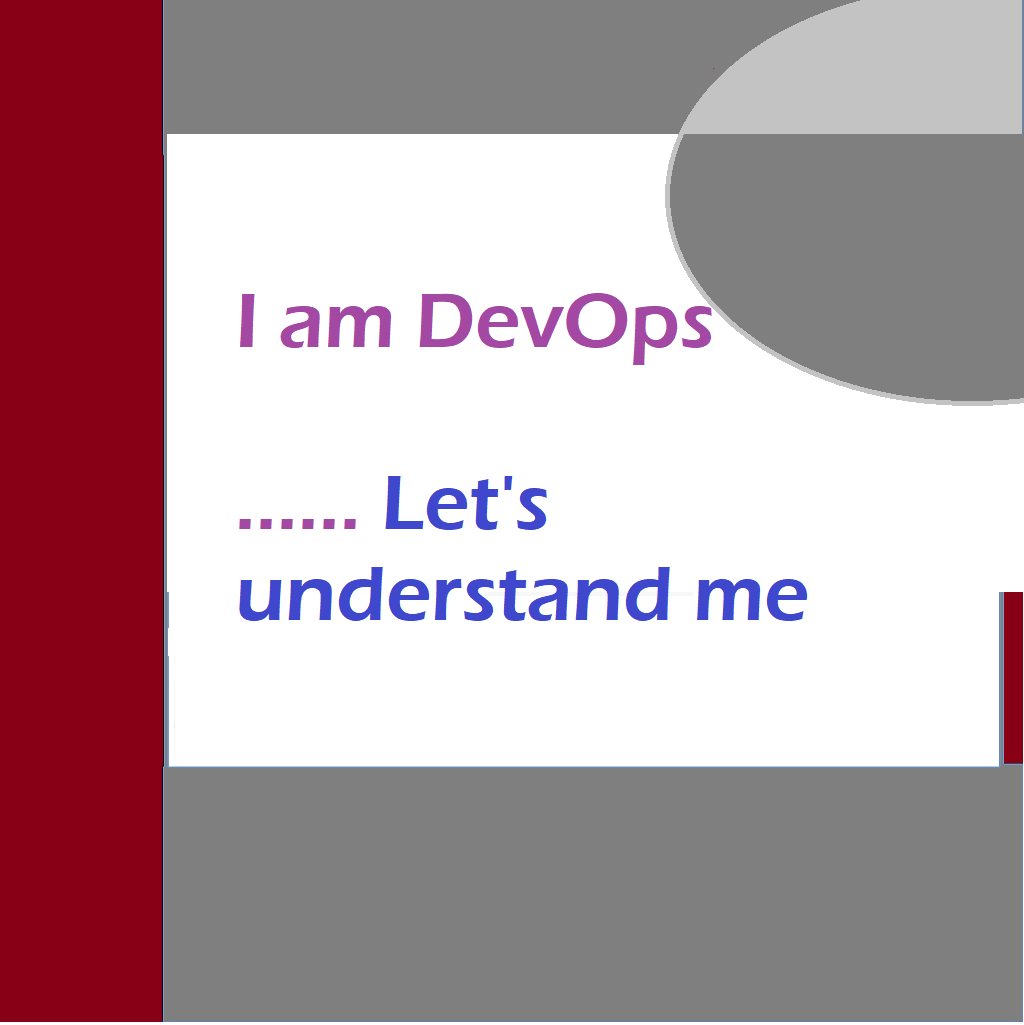Agile software development has emerged as a preferred methodology in modern software projects, revolutionizing the way teams plan, execute, and deliver products. At the heart of this flexible, iterative process is the concept of a “feature.” In Agile, features play a critical role in ensuring that teams are aligned with business goals, customer needs, and project priorities. But what exactly is a “feature” in Agile? Why is it so pivotal to the development process?
A feature can be defined as a discrete piece of functionality that delivers value to the end user. It is a high-level requirement that can be broken down into smaller tasks, user stories, or epics for easy implementation. Features represent the tangible output of the Agile development process, providing a means for businesses to prioritize their efforts and for teams to maintain focus on delivering value. They are typically defined in collaboration with stakeholders and form a crucial part of the product backlog, helping teams stay customer-focused and iterative in their approach.
In contrast to traditional software development methodologies, Agile emphasizes adaptability, collaboration, and continuous improvement. This approach allows teams to focus on delivering features incrementally, making it easier to adapt to changes, improve quality, and ensure customer satisfaction. By working on small, manageable pieces of functionality, Agile teams can provide continuous feedback and incrementally release features, improving the overall user experience and time to market.
In this article, we’ll explore the concept of a feature in Agile software development, including its definition, role in the development lifecycle, and how it differs from similar concepts like epics and user stories. We will also discuss the importance of features in driving the Agile process, breaking down their lifecycle, how they are prioritized, and how they fit into other frameworks like DevOps and Jira. Additionally, we’ll compare the use of features in Agile with their counterparts in DevOps and analyze how tools like Jira manage features within the Agile framework. Let’s dive deeper into these aspects in the following sections.
Table of Contents
Feature in Agile Software Development
Feature in Agile Software Development
Role of Features in Agile Software Development Lifecycle.
Feature Prioritization and Planning.
Managing Features in Agile with Jira.
Comparison Table: Features in Jira vs. Epics and User Stories.
Feature Breakdown and Estimation.
Feature Acceptance Criteria and Definition of Done.
Benefits of Focusing on Features in Agile.
Challenges in Feature Management
Real-World Examples of Features in Agile Software Development
Feature in Agile Software Development
- Definition of a Feature: A feature in Agile is a piece of functionality or a system capability that delivers business value to the customer. It addresses the “what” in terms of the software’s functionality and serves as a foundation for planning and prioritizing work.
- Characteristics of Features:
- Business-Driven: Features are designed to fulfill business needs.
- Customer-Centric: They aim to enhance user experience or solve user problems.
- Actionable and Deliverable: Features are actionable items that can be developed, tested, and delivered within a sprint or series of sprints.
- Examples of Features: For example, adding a “login with social media” option to a website or improving search functionality.
- Characteristics of Features:
Role of Features in Agile Software Development Lifecycle
- Features as a High-Level Requirement: In Agile, features act as high-level requirements that are broken down into smaller tasks such as user stories or epics.
- Features vs. Epics vs. User Stories:
- Features: Larger chunks of functionality that offer value.
- Epics: Collection of related user stories that provide a more detailed view of features.
- User Stories: Smaller, individual pieces of work derived from epics, often representing specific user actions.
- Feature Lifecycle:
- Ideation: Features start with ideas from stakeholders.
- Prioritization: Once documented, features are placed in the backlog and prioritized.
- Planning: During sprint planning, features are discussed, groomed, and potentially divided into smaller tasks.
- Implementation: Developers and designers work on the feature, ensuring that it meets the criteria set out in the planning phase.
- Testing and Review: After the feature is developed, it is tested, reviewed, and iterated based on feedback.
- Release: The feature is deployed, often alongside other features, to deliver value to the end user.
- Agile Frameworks for Feature Development:
- Scrum: In Scrum, features are managed via the product backlog and addressed during sprint cycles.
- Kanban: Kanban focuses on continuous delivery, with features moving across the board based on readiness.
- Features vs. Epics vs. User Stories:

Apple AirPods 4
Feature Prioritization and Planning
- Prioritizing Features Based on Business Value: Agile teams prioritize features based on business value, customer feedback, and market demand.
- Techniques for Feature Prioritization:
- MoSCoW Method: Features are categorized as Must-have, Should-have, Could-have, and Won’t-have.
- Value vs. Effort Matrix: Helps to prioritize based on the balance between business value and development effort.
- Weighted Shortest Job First (WSJF): This technique prioritizes work based on cost of delay divided by job size.
- Role of Product Owner: Product Owners are responsible for prioritizing features in the backlog, ensuring alignment with business goals.
- Techniques for Feature Prioritization:
Managing Features in Agile with Jira
- Overview of Jira: Jira is a tool widely used in Agile project management to help track and manage work.
- Features in Jira: In Jira, features are often managed under different names such as “Issues” or “Tasks,” depending on the configuration.
- How Jira Helps in Managing Features:
- Creating Features: Features can be created in Jira by defining high-level tasks and assigning them to sprints or epics.
- Tracking Progress: Jira allows teams to track the development of features via dashboards and burndown charts.
- Workflow Integration: Teams can create custom workflows in Jira to move features through stages like backlog, in progress, and done.

Comparison Table: Features in Jira vs. Epics and User Stories
| Concept | Definition | Usage in Jira | Timeframe |
| Feature | High-level functionality that provides value | Represented as tasks, issues, or features depending on setup | Long-term |
| Epic | A large body of work that can be broken into smaller stories | Managed as larger tasks or projects | Long-term/multiple sprints |
| User Story | A small, self-contained piece of functionality from a user’s view | Managed as individual items within epics | Short-term/single sprint |
Feature vs. DevOps Stories
- Feature in Agile vs. DevOps Stories:
- Agile focuses more on delivering functional software features, while DevOps emphasizes operational capabilities and infrastructure.
- Comparison Table: Feature vs. DevOps Story
| Aspect | Agile Feature | DevOps Story |
| Focus | End-user functionality | Operational improvement and automation |
| Objective | Deliver user-facing value | Improve system reliability, scalability |
| Measurement | Based on end-user satisfaction or feature completion | Measured by operational metrics, SLAs |
| Lifecycle | Iterative, focused on development | Continuous, focused on deployment and monitoring |
- Collaboration Between Agile and DevOps: Both Agile and DevOps aim to deliver value to the customer, but Agile focuses on incremental feature delivery, while DevOps optimizes the operational and delivery pipelines. Features in Agile can influence DevOps by necessitating infrastructure changes, automations, or performance improvements.
Feature Breakdown and Estimation
- Breaking Down Features into User Stories and Tasks: Agile teams break down features into smaller pieces to make them manageable.
- Story Points for Estimation: Features are estimated using techniques like story points or T-shirt sizing to determine the complexity and effort required.
- Feature Mapping and Dependency Tracking: Teams use feature mapping to visualize dependencies between features and ensure smooth implementation.
- Tools for Estimation and Dependency Tracking:
- Jira: Offers robust tools for tracking and visualizing dependencies.
- Feature Maps: Visual representations that show the progression and relationships of different features.
Feature Acceptance Criteria and Definition of Done
- Setting Acceptance Criteria: Each feature must have clear acceptance criteria that define what needs to be accomplished for the feature to be considered complete.
- Definition of Done: This refers to the criteria that must be met for a feature to be considered finished. Typically includes development, testing, and user validation.
- Feature Review: Agile teams review completed features with stakeholders to ensure they meet business objectives.
Benefits of Focusing on Features in Agile
- Customer-Centric Development: Features help teams focus on delivering customer value, improving user satisfaction.
- Continuous Feedback Loop: Working on features allows for regular feedback, enabling teams to improve the product iteratively.
- Risk Management: Features allow teams to manage risk better by focusing on delivering small, valuable pieces of work regularly.
- Time to Market: Incremental delivery of features ensures that teams can release valuable functionality faster and more frequently.
Challenges in Feature Management
- Scope Creep: Features can expand beyond their original intent if not carefully managed.
- Balancing Business and Technical Needs: Teams must ensure that features meet both business and technical requirements without compromising either.
- Dependency Management: Features often depend on other features or systems, requiring careful planning to avoid bottlenecks.
Real-World Examples of Features in Agile Software Development
To better understand how features function within Agile development, let’s look at a few real-world examples across various industries. These examples will also demonstrate how features align with the DevOps culture of continuous integration, delivery, and deployment.
1. E-Commerce Platform: One-Click Checkout
- Feature Overview: An online retail company like Amazon or Shopify introduces a “One-Click Checkout” feature to reduce friction in the customer purchasing process. This feature allows customers to complete their purchase with a single click, streamlining the checkout process.
- Agile Context: This feature is designed to improve the user experience by minimizing steps in the checkout process. In an Agile framework, this feature would be broken down into user stories such as:
- As a customer, I want to save my payment information securely for future purchases.
- As a customer, I want to confirm my shipping address with one click.
- As a business, I want to reduce cart abandonment rates by simplifying the checkout process.
- DevOps Context:
- Continuous Integration: As the development team builds the One-Click Checkout feature, DevOps ensures that it is integrated into the existing codebase without disrupting other functions.
- Automated Testing: DevOps pipelines would run automated tests to check the security of saved payment information and ensure the feature doesn’t introduce bugs.
- Continuous Deployment: Once the feature passes testing, it can be quickly deployed to the live environment, allowing users to access it sooner and for the company to gather feedback.
- Monitoring: Post-deployment, DevOps would monitor the feature’s performance, tracking metrics like transaction completion rates and cart abandonment, and ensuring the system’s performance remains stable during high traffic periods.
2. Healthcare System: Telemedicine Integration
- Feature Overview: A healthcare provider develops a new feature for their platform that allows patients to schedule and attend virtual doctor consultations via video calls.
- Agile Context: This feature is prioritized based on the growing demand for remote healthcare, especially during times like the COVID-19 pandemic. The development team might break down this feature into several user stories:
- As a patient, I want to schedule a telemedicine appointment via the app.
- As a doctor, I want to securely access patient medical records during the video call.
- As an administrator, I want to track consultation durations and feedback for quality assurance.
- DevOps Context:
- Infrastructure as Code (IaC): DevOps can create and manage the infrastructure (e.g., cloud servers, video streaming capabilities) required for supporting a large number of simultaneous video consultations.
- Continuous Delivery: The feature is delivered incrementally to allow healthcare professionals to test the system before it goes live to all users.
- Security and Compliance: Since telemedicine involves sensitive patient data, DevOps plays a key role in ensuring that security measures, like end-to-end encryption and data protection, are implemented and compliant with regulations such as HIPAA (Health Insurance Portability and Accountability Act).
- Monitoring and Logging: Once deployed, DevOps teams ensure the system logs important data such as call duration, system uptime, and any connection issues, enabling real-time troubleshooting and continuous improvement.
3. Financial Services: Fraud Detection Algorithm
- Feature Overview: A bank introduces a real-time fraud detection feature in their mobile banking app. This feature uses machine learning to detect unusual patterns in transactions and alerts the user immediately.
- Agile Context: This feature delivers significant value by improving security and reducing fraud losses. Key user stories for this feature might include:
- As a customer, I want to be notified of any suspicious transactions in real-time.
- As a bank, I want to identify potentially fraudulent activity without affecting the performance of the app.
- As a customer service agent, I want to quickly review flagged transactions and assist customers in resolving issues.
- DevOps Context:
- Model Deployment: DevOps enables the smooth deployment of machine learning models into production through continuous integration (CI) pipelines. The fraud detection algorithm must be updated regularly based on new data trends, and DevOps practices ensure this process is automated.
- Continuous Monitoring: Given the critical nature of fraud detection, the system must be monitored continuously to ensure it performs accurately and with low latency. DevOps teams set up alerts that trigger if performance metrics drop below certain thresholds.
- Scalability: DevOps ensures the feature is scalable, handling an increased load during peak transaction times, like holidays or during security breaches.
- Automation: Automation of routine tasks such as updating machine learning models and running security patches is a key DevOps principle, ensuring the fraud detection feature remains effective over time.
4. Streaming Service: Offline Download Feature
- Feature Overview: A streaming service like Netflix or Spotify introduces an “Offline Download” feature, allowing users to download content and watch/listen to it later without an internet connection.
- Agile Context: This feature is essential for improving user satisfaction, particularly in regions with poor internet connectivity. Agile teams would break down the feature into smaller deliverables such as:
- As a user, I want to download videos/songs and store them on my device for offline access.
- As a user, I want to manage my storage space by selecting download quality.
- As a platform, I want to ensure that downloaded content expires after a set period to comply with licensing agreements.
- DevOps Context:
- Infrastructure Management: DevOps practices ensure that the infrastructure needed for handling large downloads is optimized for scalability and performance, avoiding bottlenecks.
- Release Pipeline: DevOps teams would use pipelines to automatically test and deploy updates to this feature, ensuring that any improvements or bug fixes are delivered seamlessly.
- Monitoring and Feedback Loop: After deployment, DevOps teams would monitor download success rates, storage utilization, and user engagement, providing data that helps the Agile team make iterative improvements to the feature.
- Performance Optimization: Through continuous monitoring, DevOps teams can optimize the performance of the download feature, reducing download times and minimizing server strain.
How Features and DevOps Intersect
DevOps Enhances Agile Feature Delivery
In each of the examples above, DevOps practices work hand-in-hand with Agile principles to enhance the delivery, performance, and reliability of features. The key ways DevOps improves Agile feature management include:
- Automation: Automated testing, integration, and deployment ensure features are developed, tested, and released quickly without compromising quality.
- Continuous Monitoring and Feedback: DevOps provides continuous monitoring of feature performance post-deployment. This feedback loop allows Agile teams to respond to real-world issues swiftly, making iterative improvements and ensuring the feature delivers ongoing value.
- Collaboration: DevOps promotes a culture of collaboration across development, operations, and QA, ensuring the entire team is aligned on feature goals, implementation, and success metrics.
Agile Features Drive DevOps Pipeline Adjustments
The introduction of new features often requires changes in the infrastructure or operations pipeline, which is where DevOps excels. For example:
- The rollout of a high-demand feature, like offline downloads, may require the system to scale rapidly. DevOps manages this scalability, ensuring the infrastructure can support the load.
- Security features, such as real-time fraud detection, rely on DevOps to ensure compliance with regulations and real-time monitoring.
In short, Agile features define the functionality and value that will be delivered, while DevOps ensures that the pipeline, infrastructure, and operational tools are in place to deliver that value in an efficient, reliable, and secure manner.

Real-world examples such as the one-click checkout for e-commerce, telemedicine integrations, fraud detection in banking, and offline downloads in streaming services highlight how Agile features are designed to provide customer value. These examples also showcase how DevOps practices enhance feature development, ensuring that features are deployed quickly, operate reliably, and can scale with user demand. The symbiotic relationship between Agile feature development and DevOps processes is crucial to achieving modern software delivery objectives, ultimately leading to more responsive, high-quality products that align with customer needs.
Conclusion
- Summary of Key Points: Features are a vital component of Agile software development, driving customer value, prioritizing business needs, and enabling continuous improvement. By focusing on feature delivery, Agile teams can ensure they are creating user-centric, valuable products that evolve with market and customer demands.
- Final Thoughts: Features, when managed correctly, provide a powerful mechanism for aligning development efforts with business objectives, ensuring Agile teams can deliver high-quality software in a timely, iterative fashion.






Ive read several just right stuff here Certainly price bookmarking for revisiting I wonder how a lot effort you place to create this kind of great informative website
Techarp You’re so awesome! I don’t believe I have read a single thing like that before. So great to find someone with some original thoughts on this topic. Really.. thank you for starting this up. This website is something that is needed on the internet, someone with a little originality!